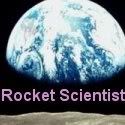The Last Hubble Mission Part 2
>> Monday, May 25, 2009

Someone mentioned on my first post that protecting the crew was most important but that saving the Hubble Space Telescope was also important - that it's loss would also be terrible.
This mission was a balancing of these two risks and, hats off to NASA and the crew, they pulled it off so that we lost neither one. Given the challenge, and, as taxpayers, we were paying for it, I think it worth while to detail what exactly we bought with this last mission and what kind of shape our telescope is in now.
There was a great deal of work involved so this might take a few posts.
Today: Prep work
I have a quote in my collection from Abraham Lincoln: "If I had eight hours to chop down a tree, I'd spend six sharpening my axe." NASA is generally the living embodiment of this sentiment and never more so than working with Hubble.
The folks from Goddard Space Flight Center figure out the priority of tasks, build the tools and all of the support hardware. Hubble has more unique tools developed than probably any other EVA [EVA=extravehicular activity] project since we landed on the moon. As for the support equipment, that's a pretty impressive feat in and of itself. Not only to we have to safely bring up huge items like replacement instruments and solar arrays, we have to make them so that they can be readily retrieved by suited crewmembers and also cart back the big items we are pulling off to replace - and they aren't always the same size. And, of course, bring all the tools in an accessible way.
EVAs are generally practiced ahead of time in an environment as close to zero-g as we can manage, in this case, the Neutral Buoyancy Laboratory. The actual choreography is worked by Mission Operation personnel who run test after test where the activities are worked on representative models under water (and, yes, safety watches too). In general, one wants to do 10 water runs for each EVA, but Hubble missions can push it even farther, including developmental runs and runs to test various tools thatmight be developed specific to the mission objectives. For instance, on the last mission (SM-3B), they had to develop a special tool to replace the Power Control Unit (which was not designed to be replaced on-orbit) where the connectors were too close together for the pressurized gloves to remove them. So they made a tool to grip them.
If we didn't do the exhaustive (and exhausting) water runs, if we didn't have such responsive and capable folks handling tool and hardware development, these servicing missions wouldn't be nearly as successful as they have been. And some of what the Hubble has accomplished would never have been.
More to come...





.jpg)











.jpg)



doing that much repetition of stuff sounds like a lot less excitement than I tend to associated with the space program.
Being an astronaut is a LOT of hard work. Grueling, repetitious, unglamorous. Long hours are the norm and not the exception. And they have to stay in shape, do public appearances...
The goal is to make it as easy as it looks when they get into space. Not saying it IS that easy, but it's a great deal easier because they do the right prep work.
Practice makes perfect and after reading a lot about the Apollo missions same holds true. In my next life I want to be an astronaut. I was watching a show last night, From The Earth to the Moon, episode 11, "The Original Wives Club", hell I've even settle to be one of their wifes,lol.